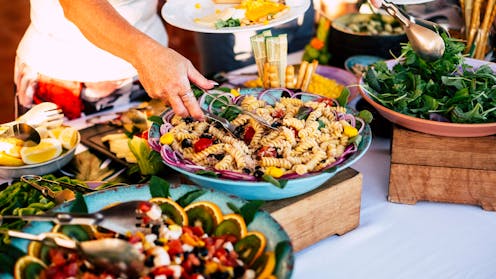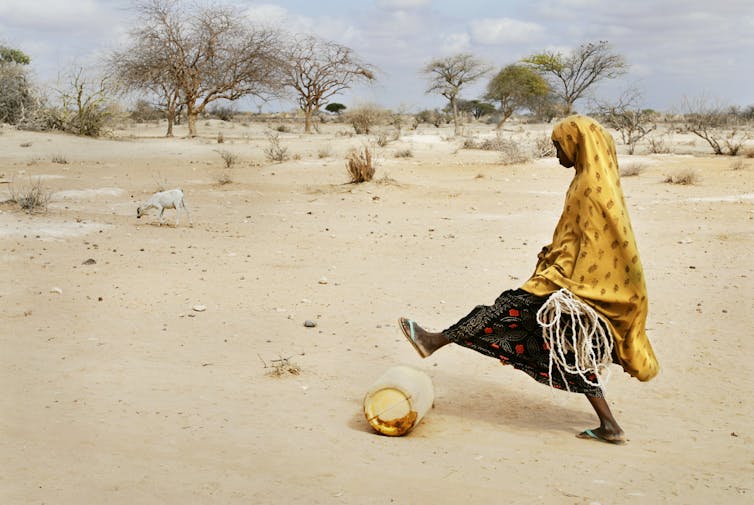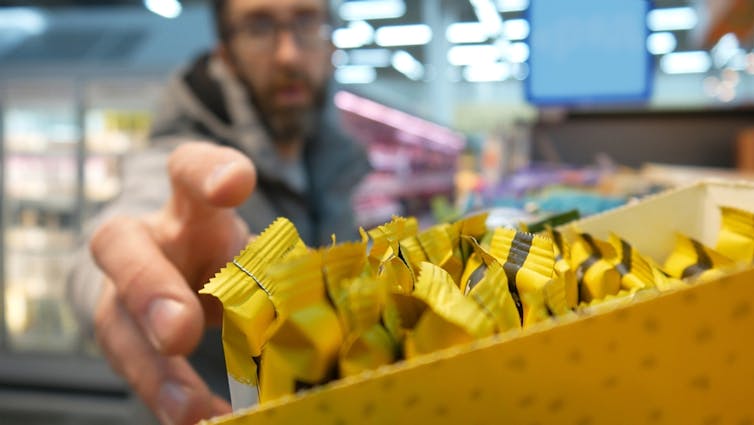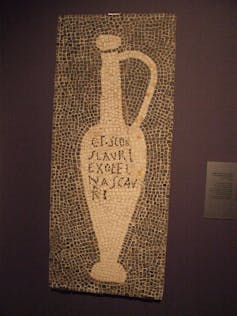Source: The Conversation – UK – By Kimon-Andreas Karatzas, Associate Professor of Food Microbiology, Department of Food and Nutritional Sciences, University of Reading
You pile your plate high at the buffet, savouring the freedom to try a little bit of everything. But while your tastebuds might be celebrating, your gut could be at risk.
From shared serving spoons to lukewarm lasagne, buffets can be a breeding ground for bacteria – and a hotbed for food poisoning. In the UK alone, millions of cases go unreported each year. So what makes buffets so risky, and what can be done to stay safe?
Food poisoning is a serious issue in the UK and around the world. While most cases are mild and don’t require treatment, some can lead to hospitalisation or even death. Official figures suggest approximately 2.4 million people in the UK fall ill each year due to food-borne illness – mostly caused by viruses, bacteria or toxins in contaminated food. But because many people recover at home without reporting their symptoms, the real figure is likely much higher.
The Food Standards Agency (FSA) estimates that there are closer to 18 million cases of food poisoning in the UK each year. That’s almost one in four people. And buffets – particularly all-you-can-eat venues – are a common setting for outbreaks.
So, what is it about buffets that makes them such a hotspot for illness? Here are the key reasons these self-serve spreads carry higher risks:
1. Cross-Contamination
One of the biggest concerns at buffets is cross-contamination, when harmful bacteria, viruses or allergens are transferred from one food to another. This can happen in any kitchen, but buffets are particularly vulnerable.
Why? Because dozens of dishes are often displayed close together, customers serve themselves (sometimes without washing their hands), utensils are shared between people and dishes and food are exposed to the air for extended periods.
If just one dish becomes contaminated – say, with under-cooked meat juices or bacteria from unwashed hands – they can spread to other foods, affecting many people. Sneezes over platters and untrained customers handling food directly all increase the risk.
Even something as simple as using the same spoon for multiple dishes can be enough to transfer bacteria. With many hands touching the same utensils and food being moved or mixed between containers, even a well-run buffet can become a hazard zone as it is difficult to monitor and control that all customers abide to food safety rules.
2. Allergens
For people with food allergies, buffets can be particularly dangerous. Cross-contamination means that allergen-free foods can become unsafe through even minimal contact with allergenic ingredients.
For example, a spoon used in a nut-containing salad and then placed into a nut-free one can be enough to trigger a reaction. To reduce this risk, check that buffet venues clearly label all dishes with allergen information, use separate serving utensils for different foods, keep allergen-free dishes physically separate from others and train staff on allergen safety and cross-contamination risks.
Despite best intentions, busy buffet settings don’t always allow for these precautions to be enforced perfectly, putting allergic diners at greater risk.
3. Temperature trouble
One of the main food safety challenges at buffets is temperature control. Harmful bacteria multiply rapidly in what experts call the “danger zone”: the temperature range between 8°C and 63°C. If food sits within this range for too long, it becomes an ideal breeding ground for microbes.
Several types of bacteria are commonly responsible for food-borne illness in buffet settings.
Salmonella is often found in under-cooked poultry, eggs, and dairy products. It can cause diarrhoea, fever, and abdominal cramps, and it spreads easily if hot food is not kept at a safe temperature.
E. coli, typically linked to under-cooked beef and raw vegetables, can cause severe gastrointestinal illness and, in some cases, lead to kidney failure.
Listeria monocytogenes can grow in chilled foods like soft cheeses, pâté, and pre-packed sandwiches. It poses serious risks to pregnant women, older adults, and those with weakened immune systems.
Clostridium perfringens thrives in food that has been left warm for too long – especially items like stews, casseroles and roasts. It can cause sudden stomach cramps and diarrhoea.
Norovirus, also called the winter vomiting bug, is a stomach bug that causes vomiting and diarrhoea. Infected customers can pass this virus on the food with direct contact and cause disease to others that will consume it.
Staphylococcus aureus is a bacterium commonly found on the skin of humans and when it grows on food produces toxins that can cause nausea, vomiting, stomach cramps and diarrhoea. This bacterium can easily end up on the food through contact with utensils or customers and grow if the temperature of food is not within the correct range.
Maintaining safe food temperatures is essential to prevent these pathogens from multiplying. According to food safety guidelines, hot food should be kept above 63°C, and cold food below 8°C. However, in many buffet settings, food is left sitting out for extended periods – sometimes in ambient room temperatures, and sometimes without adequate heating or refrigeration equipment. This allows bacteria to flourish.
To minimise risk, hot food should not be left out for more than two hours, and cold food should be consumed within four. After these limits, leftover items should be discarded and not mixed with fresh batches. Reusing food that’s been sitting out not only compromises freshness but also risks spreading bacteria from old to new dishes.
Unfortunately, in busy all-you-can-eat environments, it’s common for staff to top up half-empty trays instead of replacing them. While this may reduce food waste, it increases the likelihood of contamination, especially during high-traffic service times. Without strict hygiene protocols in place, even small lapses in temperature control can lead to widespread illness.
Staying safe
Buffets don’t have to be a recipe for disaster – but safety depends on both the venue’s hygiene practices and diners’ own behaviour. Here’s what to look for:
-
dishes should be steaming hot or chilled, not lukewarm
-
clean utensils should be available for each item
-
clear allergen labels should be visible
-
staff should be monitoring and maintaining food stations
-
diners should wash their hands before serving themselves.
If in doubt, it’s safer to skip questionable dishes, especially those that look like they’ve been sitting out too long, are unlabelled, or have been clearly mixed with other items.
Buffets can be a delicious way to explore new flavours and enjoy variety. But without proper precautions, they can also pose serious food safety risks. Whether you’re tucking into a carvery, grazing a hotel breakfast, or piling your plate at an all-you-can-eat spread, it’s worth keeping an eye on hygiene – and knowing when to walk away from the buffet table.
![]()
Kimon-Andreas Karatzas receives funding from the EU, BBSRC, EPSRC and private companies (Future Biogas, Natureseal and AB Mauri)
– ref. Three reasons buffets can be a recipe for a health disaster – and how to keep diners safe – https://theconversation.com/three-reasons-buffets-can-be-a-recipe-for-a-health-disaster-and-how-to-keep-diners-safe-260754















